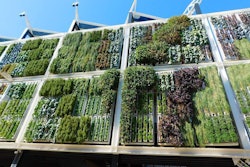 Photo: F. D. Richards/Flickr
Photo: F. D. Richards/FlickrThe Japanese barberry tree, a popular landscaping shrub with attractive flowers, was banned from sale in the state of New York in the spring of 2015.
The Japanese barberry tree is one of the 11 plants on the state’s banned invasives list, but it will soon be returning to nurseries because of research done by the University of Connecticut. The return will likely take place in the next year.
The research states that without seeds, the plant is unable to spread and therefore renders new variants of the plant sterile.
Barberries, scientifically known as Berberis thundbergii, are attractive spiny shrubs that are easy to grow and popular among many homeowners and landscapers, according to the Times Union.
Recently, New York State’s Department of Environmental Conservation approved the sale of four sterile versions of the Japanese barberry plant, along with two versions of winter creeper and Chinese silvergrass.
With seed-bearing versions of these plants, the problem lies in the spreadability of the seeds. Birds and other creatures serve as the main spreader of the seeds, and once the seeds are dispersed the invasive plant will take root.
Once the Japanese barberries are in place, they will out-compete native species by changing soil chemistry and crowding out sunlight. These actions establish new colonies and allow for spreading to continue.
Existing patches of fertile barberry will still be able to spread to new areas, but this new barberry plant would end this continued expansion aspect.
“Of course, we still encourage homeowners to plant native, non-invasive species,” Troy Weldy, director of ecological management for The Nature Conservancy, told the Times Union.
A few recommended non-invasive alternatives are eastern ninebark, old fashioned weigela, weigela and smokebush.
Weldy’s concern for the future of the barberry pertains to companies creating honest labels, since the average homeowner may not be able to tell the difference between sterile and non-sterile trees.
Another popular landscaping plant that researchers are striving to create a sterile version of is the burning bush, Euonymus alatus. Homeowners are fond of this plant for its dramatic red foliage in the fall.
Because the burning bush is a plant regulated by the state, it can still be sold in New York but it must be labeled as an invasive species that is “harmful to the environment.”










